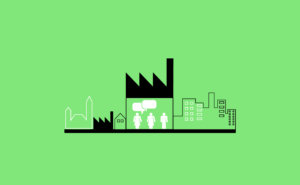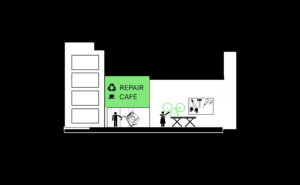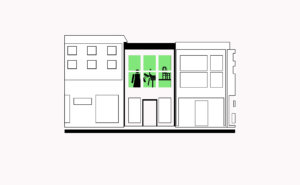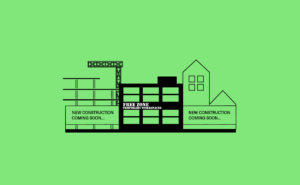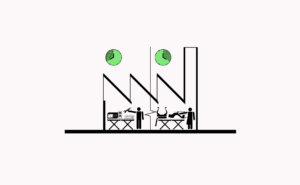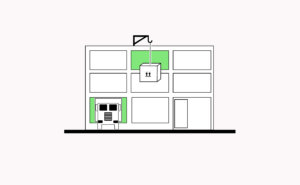
P.1 Productive Rooftops
Roofs complement the performance of a building or intensifying land use, allowing for climate adaptation, food and energy production.
[Context] As manufacturing often requires large surface areas, rooftops provide an opportunity to also serve a productive function. In the context of growing needs to address both the effects of climate change and to become more resilient, a smart and productive use of rooftops in cities has become imperative. Productive roofs can perform at different levels. Adding vegetation can improve N.8 Quality Urban Environment in Making Areas. Collecting water can help with R.7 Multi-scalar Circular Infrastructure. Green roofs have benefits in evapotranspiration, carbon sequestration and space for biodiversity. A sedum garden can improve building insulation while buffering water. Urban agriculture can be located on buildings, particularly where there is an opportunity for heat exchange (N.2 Re-use of Materials & Energy Flows). Roofs can also contribute to the production of renewable energy. The function of the rooftop should depend on the business type, location, local environmental issues (like flooding or urban heat-island), the roof structure and cost of installation.
[Problem] The only opportunity to install productive rooftops is during new construction works or redevelopment of old buildings. Retrofitting existing buildings, which represents a significant underutilised surface area, is filled with challenges. Roof structures may be lightweight and incapable of carrying even the lightest of loads. Roofs could be inaccessible, as they were not built for serving any other function than covering the building. If accessible, they may have very limited accessibility as it would involve interrupting manufacturing activities (particularly if dust or pathogens are a concern for the production process), making it difficult for the roofs to be maintained. Likewise, roofing may be shaped or oriented in such a way that the roof offers little viable use. Finally, for rental spaces, building owners may have no interest in using the roof when tenants may not have a long enough contract to justify the investment.
[Forces] As buildings may take 30-60 years before undergoing a considerable renovation, established building owners need a good incentive to retrofit their rooftops. For new projects, public authorities need to be sure that buildings are designed to handle loads that can provide some flexibility in the use of the roof spaces. Finally, if building owners are required to install some roof system to mitigate environmental issues (such as sedum or water detention), the public authority must find ways to ensure that the system remains operational and maintained years later.
[Solutions] Provide suitable infrastructure and roof access to ensure that even roof spaces can be put to good use. New projects will generally require by law the use of roof surfaces (such as for water management or energy production). If considered carefully, roofs can be used within the production process (to provide water, energy, use heat etc.). Critical issues need to be considered. First, whether the structure of the building is able to hold the additional weight. Secondly, the cost of installing a productive roof and define how investments may be recovered. Thirdly, determine the additional costs for maintenance, irrigation, fertilisation, and safe access. Fourth, calculate the trade-off of having natural light from skylights versus a functional roof. Finally, define the context (existing roof landscape, orientation) and related regulations that can limit the potential functions added to a roof. For areas with poorly used of rooftops, R.10 Place-based Financial Levers can support the installation of green or productive roofs, sedum gardens, greenhouses for agriculture and solar panels. Subsidies can help adding the necessary B.7 Access to Technical Networks & Services (structural improvements, most importantly) for the new use and also providing for support maintenance. Solar panels may be seen as an investment to reduce energy costs and can be implemented by an energy cooperative that can become responsible for maintaining the technology. R.11 Incentives for Research & Development and B.5 Enabling Vertical Making could encourage new solutions or programmes for productive roofs. Urban farming could be used by staff to provide healthy and R.5 Fair Work Conditions. For urban farming, N.3 Mixing Complementary Making & Related Services can be useful in terms of industrial symbiosis (for heat or resources), by gaining access to specialist knowledge and by having clients nearby.
[Contribution] Add contributions here.
